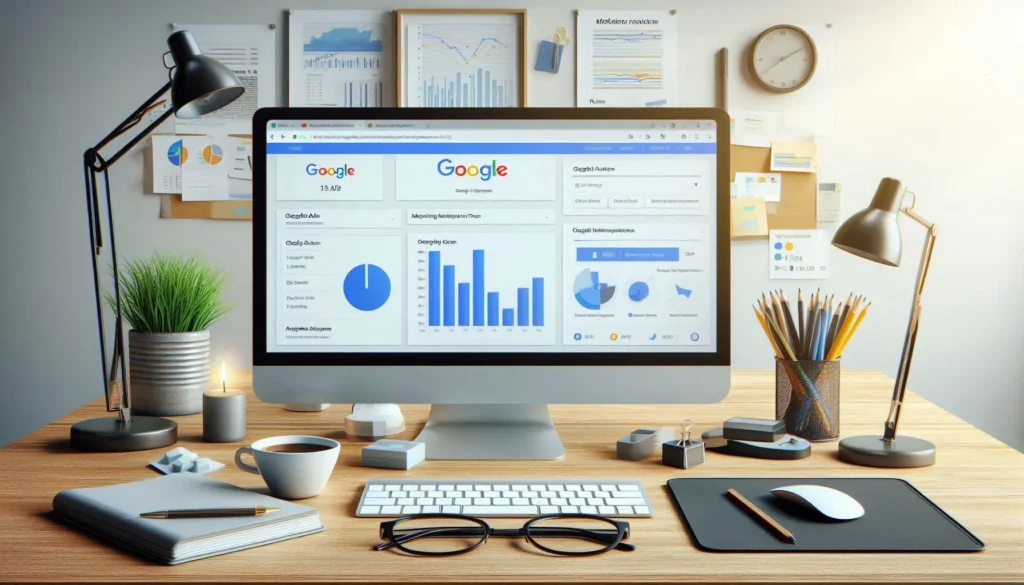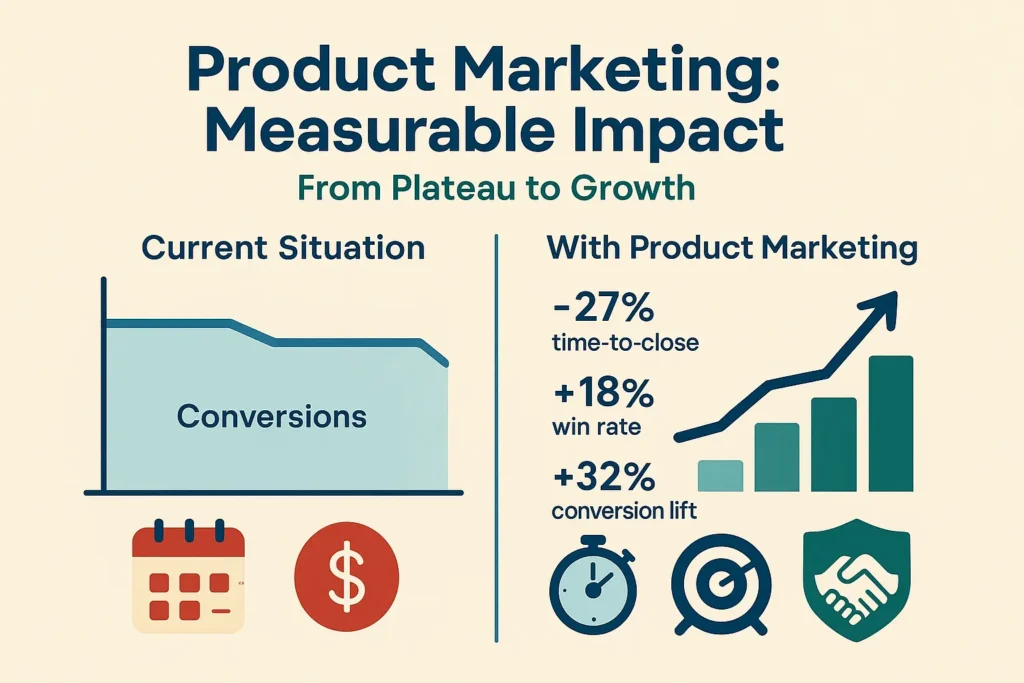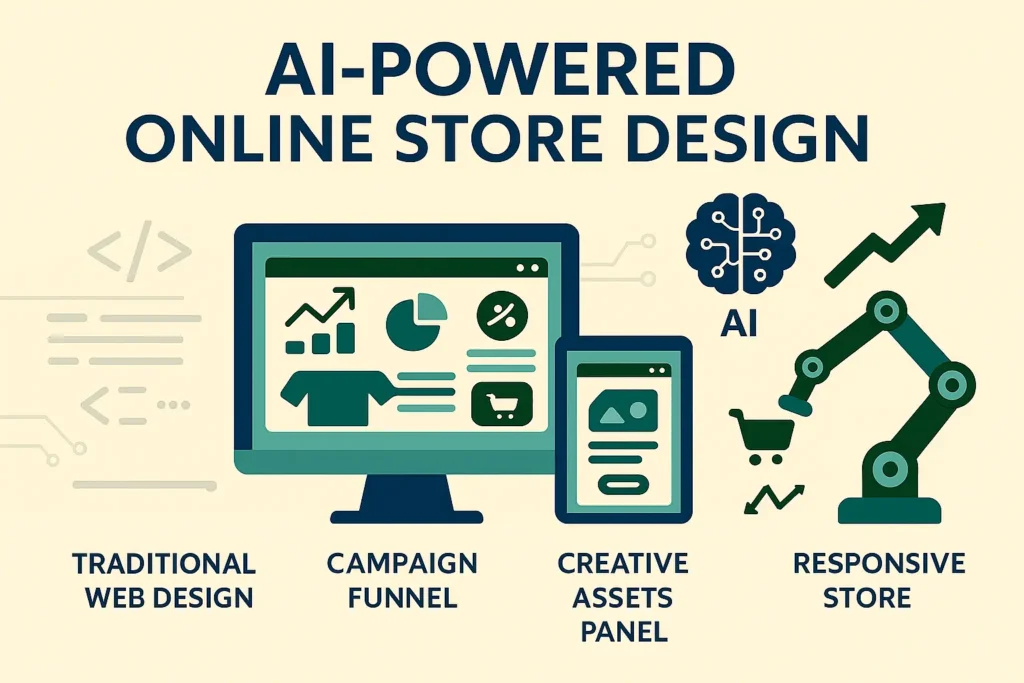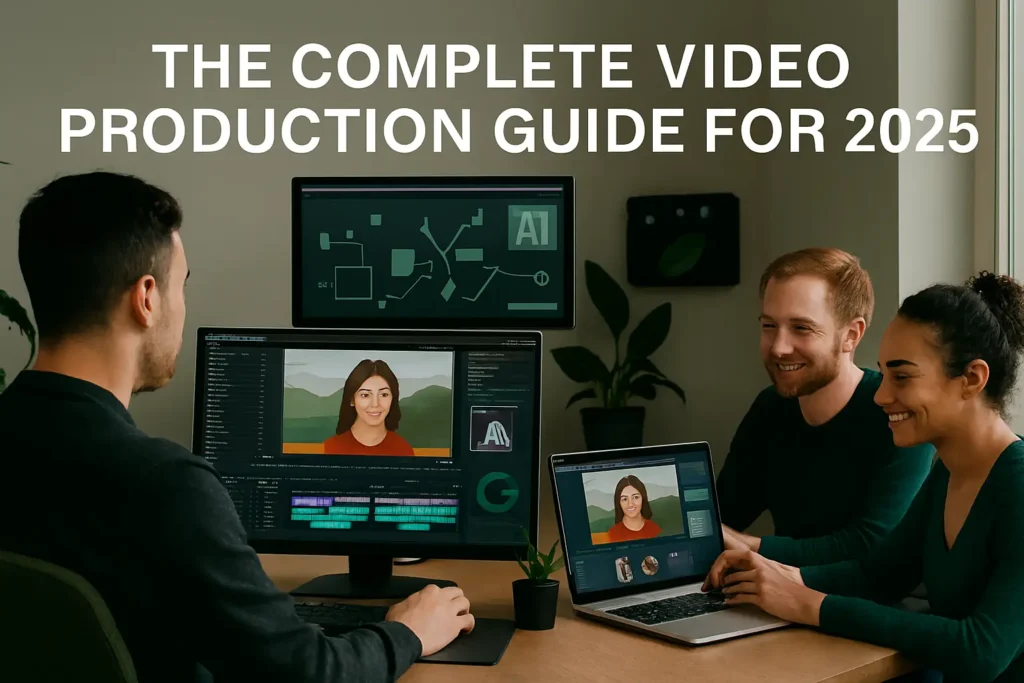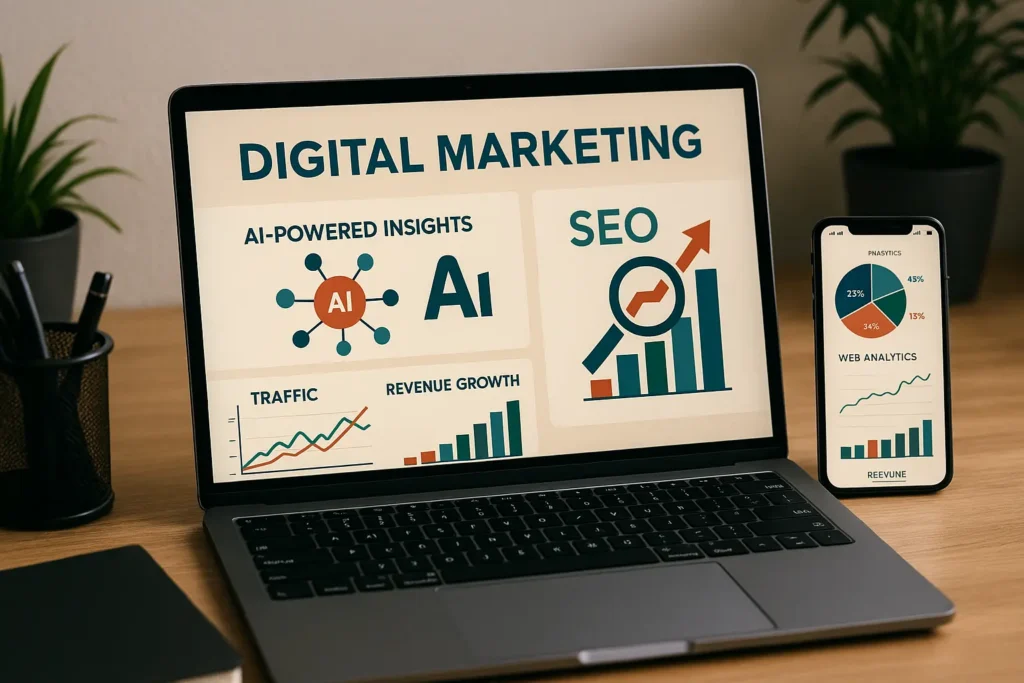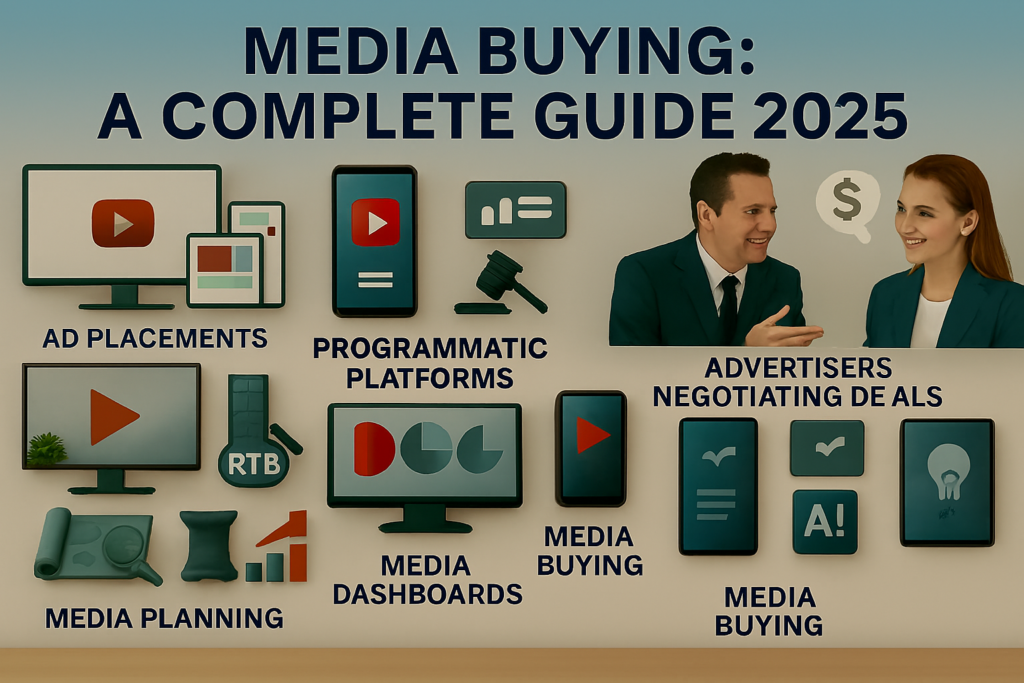
Media Buying: A Complete Guide
Media Buying Guide 2025: Strategies for Ad Success
In today’s complex advertising ecosystem, media buying represents one of the most critical functions that can make or break your marketing campaigns. You’re not just purchasing ad space anymore; you’re orchestrating a sophisticated dance between technology, strategy, and human relationships that determines whether your brand message reaches the right people at the right moment.
Media buying differs fundamentally from media planning in that while planning focuses on strategy and audience research, media buying involves handling the actual negotiations, purchases, and implementation of ad placements. Think of media planning as the blueprint and media buying as the construction process that brings that blueprint to life.
The landscape has evolved dramatically from the days when you could place a single print advertisement in a major publication and call it a day. You’re now navigating an overwhelming world of machine learning, real-time bidding, and programmatic platforms that can analyze audience signals and leverage insights from social media and online content to help you understand how customers discover your products and services.
Key stakeholders in your media buying ecosystem
include advertisers, agencies, publishers, technology platforms, and data providers. Each plays a crucial role in ensuring your campaigns reach their intended audiences effectively. Your success depends on understanding how these relationships interconnect and influence your campaign performance.
Effective media buying has become crucial for business success because it directly impacts your return on advertising spend, brand awareness, and customer acquisition costs. When you master this discipline, you gain the power to efficiently allocate resources, maximize campaign performance, and drive meaningful business outcomes.
Fundamentals of Media Buying
Your foundation in media buying rests on understanding core principles that transcend specific channels or technologies. You must focus on reaching the right audience with the right message at the right time while optimizing for cost efficiency and performance outcomes.
Key performance indicators become your north star, guiding every decision you make. You’ll track metrics like cost per mille (CPM), cost per click (CPC), conversion rates, return on advertising spend (ROAS), and brand awareness lift. These metrics help you understand not just campaign performance but also the efficiency of your media investments.
Budget allocation requires strategic thinking about how to distribute resources across different channels, timeframes, and audience segments. You need to balance proven performers with experimental opportunities, ensuring you’re maximizing current returns while building future growth potential.
Target audience identification goes beyond basic demographics. You’re leveraging behavioral data, psychographic insights, and first-party customer information to create detailed audience segments that inform your buying decisions. This segmentation becomes the foundation for all your targeting and optimization efforts.
Media mix optimization involves continuously testing and refining your channel allocation to achieve optimal performance. You’re not just buying media; you’re building a portfolio of media investments that work synergistically to achieve your marketing objectives.
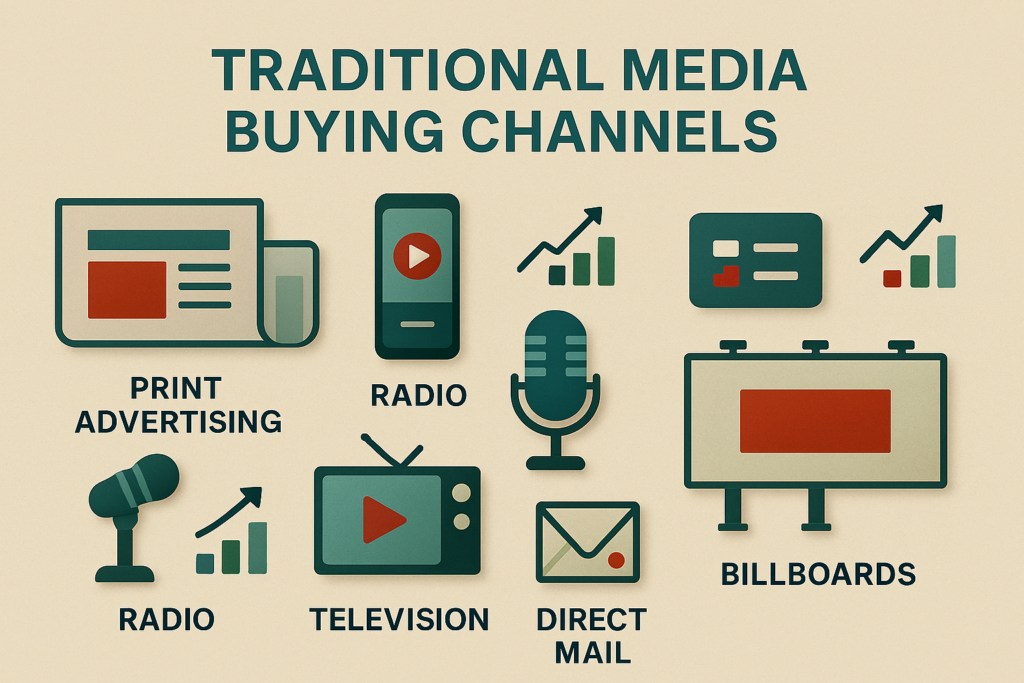
Traditional Media Buying Channels
Print advertising still offers unique advantages for reaching specific demographics and creating lasting brand impressions. When you buy print media, you’re working directly with publication sales teams, negotiating rates based on circulation, readership demographics, and placement specifications. You need to understand rate cards, frequency discounts, and seasonal pricing fluctuations.
Radio advertising provides intimate audience connections and local market penetration that digital channels often struggle to match. Your radio buying involves understanding dayparts, audience composition, and the unique creative requirements of audio advertising. Building relationships with station sales representatives becomes crucial for securing optimal time slots and negotiating favorable rates.
Television and broadcast media buying remain
one of the most complex traditional channels. You’re navigating programming schedules, audience measurement systems, and make-good policies while coordinating creative delivery across multiple stations or networks. Understanding gross rating points (GRPs), reach, and frequency calculations becomes essential for campaign planning and evaluation.
Out-of-home and billboard advertising requires location-based thinking and understanding of traffic patterns, visibility metrics, and local regulations. You’re evaluating sites based on impressions, demographics of passersby, and the creative impact of different format sizes and technologies.
Direct mail and other offline channels demand understanding of postal regulations, production timelines, and list management. You’re coordinating with multiple vendors, including list brokers, printers, and mail houses, to ensure successful campaign execution.
Building relationships with traditional media vendors creates competitive advantages through preferential inventory access, better pricing, and enhanced campaign support. These relationships often take years to develop, but provide substantial long-term value for your media buying efforts.
Digital and Programmatic Media Buying
Programmatic advertising has revolutionized how you approach digital media buying by introducing automation, real-time optimization, and sophisticated targeting capabilities. You’re no longer manually placing individual ad buys but instead setting parameters and letting algorithms execute thousands of buying decisions on your behalf.
Real-time bidding (RTB) and auction dynamics require an understanding of bid strategies, audience valuation, and competitive landscapes. Every ad impression becomes an individual auction where you’re competing against other advertisers for the same audience attention. Your success depends on sophisticated bidding algorithms and accurate audience valuation.
Demand-side platforms (DSPs) serve as your command center for programmatic campaigns. These platforms provide access to multiple ad exchanges, audience data, and optimization tools. You need to evaluate DSPs based on inventory access, targeting capabilities, reporting functionality, and integration with your existing technology stack.
Supply-side platforms (SSPs) and ad exchanges represent the other side of the programmatic equation, where publishers make their inventory available for purchase. Understanding how these platforms operate helps you make more informed buying decisions and identify premium inventory opportunities.
Data management platforms (DMPs) and audience targeting capabilities enable sophisticated audience segmentation and personalization. You’re combining first-party customer data with third-party audience insights to create highly targeted campaign segments that drive improved performance.
Connected TV and over-the-top (OTT) advertising represent the evolution of television advertising into the digital realm. You’re applying digital targeting and measurement capabilities to premium video content, creating new opportunities for audience engagement and campaign optimization.
Social Media Buying Strategies
Platform-specific buying approaches require a deep understanding of each social media environment. Facebook and Instagram offer sophisticated targeting options and creative formats, while Twitter focuses on real-time conversation engagement. Each platform has unique audience behaviors, ad formats, and optimization strategies.
Emerging platforms like TikTok, Snapchat, and Twitch present new opportunities for reaching younger demographics and creating viral content experiences. You need to understand platform-specific content styles, audience expectations, and creative best practices to succeed on these channels.
Influencer marketing and sponsored content buying involve identifying authentic partnerships between your brand and content creators. You’re evaluating influencer audiences, engagement rates, and content alignment to create partnerships that feel natural and drive meaningful results.
Social commerce and shoppable ad formats transform social media from awareness channels into direct sales drivers. You’re creating seamless shopping experiences that allow customers to discover, evaluate, and purchase products without leaving the social platform.
Cross-platform campaign coordination ensures consistent messaging and optimal budget allocation across multiple social channels. You’re managing creative adaptation, audience overlap, and attribution challenges while maintaining campaign coherence and performance optimization.
The Media Buying Process
Research and competitive analysis form the foundation of successful campaigns. You’re analyzing competitor strategies, identifying market opportunities, and understanding audience behaviors across different channels. This research informs your entire buying strategy and helps you avoid common pitfalls.
Request for proposals (RFP) development creates structured processes for evaluating vendors and securing optimal terms. Your RFPs should communicate objectives, requirements, and evaluation criteria while providing vendors with sufficient information to submit competitive proposals.
Vendor negotiations and contract terms require balancing cost efficiency with campaign requirements. You’re negotiating not just pricing but also make-good policies, creative specifications, reporting requirements, and performance guarantees. Understanding industry standards and market rates provides negotiating leverage.
Media planning integration ensures your buying decisions align with strategic objectives and creative requirements. You’re coordinating timelines, budget allocations, and performance expectations across multiple stakeholders and campaign elements.
Budget approval and sign-off procedures create accountability and ensure stakeholder alignment before campaign launch. You need clear documentation of campaign parameters, expected outcomes, and success metrics to secure necessary approvals and manage expectations.
Keep reading and uncover secrets that can change the way you work. How AI Technologies Help Improve Snapchat Ads Results in Saudi Arabia
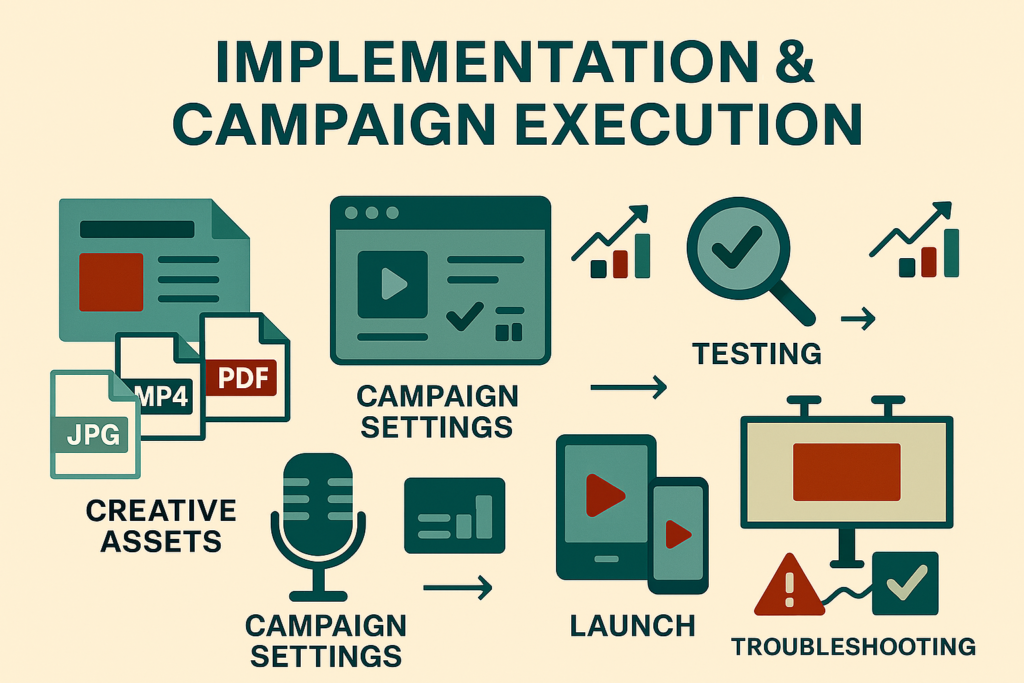
Implementation and Campaign Execution
Creative asset preparation and specifications require meticulous attention to detail and proactive communication. You must collect ad specifications during earlier planning phases rather than scrambling during implementation. Each platform has unique requirements for file formats, dimensions, and content restrictions.
Ad trafficking and placement setup involves logging into various advertising platforms and configuring campaign parameters. This process has become increasingly complex as the digital advertising landscape has evolved, requiring systematic approaches to avoid errors and delays.
Quality assurance and testing procedures help identify potential issues before campaigns launch. You’re verifying creative rendering, tracking implementation, and targeting accuracy across all platforms and placements. This testing phase prevents costly mistakes and ensures optimal campaign performance.
Campaign launch coordination requires synchronized timing across multiple channels and platforms. You’re managing creative delivery deadlines, vendor activation schedules, and stakeholder communication to ensure smooth campaign launches.
Troubleshooting common implementation issues becomes an essential skill as campaigns become more complex. You need systematic approaches for identifying and resolving problems with tracking, creative delivery, platform integration, and performance discrepancies.
Keep reading and uncover secrets that can change the way you work. Why Smart Brands Outsource Their Facebook Ads to Professionals
Tracking, Measurement, and Analytics
Setting up proper tracking infrastructure enables accurate performance measurement and optimization. You’re implementing tracking pixels, conversion tags, and attribution systems that provide comprehensive visibility into campaign performance across all touchpoints.
Placement naming conventions and organization create systematic approaches for managing complex campaigns. Rather than using error-prone manual processes, you should implement systems that automatically generate consistent placement names according to your established conventions.
Cross-platform attribution and measurement help you understand the complete customer journey. You’re connecting touchpoints across multiple channels and devices to accurately attribute conversions and optimize budget allocation based on true performance contribution.
Performance monitoring and real-time optimization enable continuous campaign improvement. You’re establishing monitoring schedules, alert systems, and optimization protocols that ensure campaigns stay on track toward achieving their objectives.
Reporting frameworks and stakeholder communication transform raw performance data into actionable insights. You need standardized reporting templates, automated data collection processes, and clear communication protocols that keep stakeholders informed and engaged.
Keep reading and uncover secrets that can change the way you work. Best Google Ads Services in Saudi Arabia Powered by AI – Boost Your Sales Today
Tools and Technology Stack
Essential media buying software and platforms provide the foundation for campaign management and optimization. You’re evaluating solutions based on functionality, integration capabilities, user experience, and total cost of ownership. The right technology stack can dramatically improve campaign performance and operational efficiency.
Project management systems for media teams create structured approaches for managing complex campaigns and multiple stakeholders. Purpose-built agency project management tools like Clients & Profits, Function Point, Workamajig, and Workbook by Deltek offer specialized functionality for media operations.
Analytics and reporting tools enable sophisticated performance analysis and campaign optimization. You need solutions that can consolidate data from multiple sources, provide real-time insights, and support both automated and custom reporting requirements.
Creative management and asset organization systems help you manage the growing complexity of creative assets across multiple campaigns and platforms. You’re implementing solutions that support version control, creative specifications, and efficient asset delivery to various platforms.
Automation tools and workflow optimization reduce manual tasks and minimize errors. You’re identifying opportunities to automate routine processes while maintaining necessary human oversight and creative decision-making capabilities.
Keep reading and uncover secrets that can change the way you work. The Competitive Advantage of Using Snap Ads for Your Business Growth
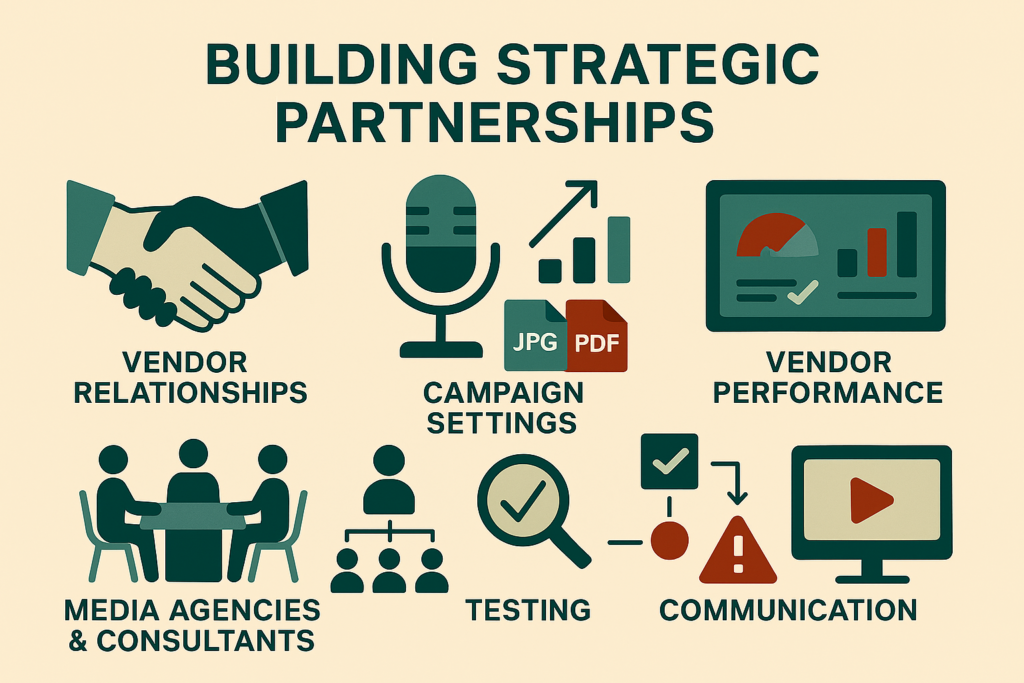
Building Strategic Partnerships
Developing vendor relationships and negotiations creates long-term competitive advantages. You’re building partnerships based on mutual value creation, performance accountability, and strategic alignment. These relationships often provide access to premium inventory, favorable pricing, and enhanced campaign support.
Working with media agencies and consultants can provide specialized expertise and established vendor relationships. You need to evaluate whether to handle media buying in-house or partner with external specialists based on your team’s capabilities, campaign complexity, and resource availability.
Internal team structure and role definitions ensure clear accountability and efficient workflow. You’re establishing roles that balance strategic thinking with operational execution while creating career development paths that retain top talent.
Communication protocols and approval processes create structured approaches for managing complex campaigns and multiple stakeholders. You need clear documentation of decision-making authority, approval requirements, and communication responsibilities.
Vendor performance evaluation and management ensure accountability and continuous improvement. You’re establishing performance metrics, regular review processes, and improvement planning that drives better results from all vendor relationships.
Keep reading and uncover secrets that can change the way you work. What Are Google Ads and How Can You Use Them to Market Your Products and Services?
Current Trends and Future Outlook
Artificial intelligence and machine learning applications are transforming campaign optimization and audience targeting. You’re leveraging algorithms that can process vast amounts of data to identify patterns and opportunities that human analysis might miss.
Privacy regulations and cookieless advertising require new approaches to audience targeting and measurement. You’re adapting strategies to work within privacy constraints while maintaining campaign effectiveness and customer insights.
Connected home and IoT advertising opportunities represent emerging channels for reaching consumers in new contexts. You’re exploring how smart home devices, connected cars, and other IoT platforms can become part of your media mix.
Voice advertising and audio platform growth create new opportunities for engaging audiences through audio content. You’re developing strategies for podcast advertising, voice assistant integration, and audio streaming platforms.
Sustainability and brand safety considerations increasingly influence media buying decisions. You’re evaluating vendors and platforms based on their environmental impact, content policies, and alignment with your brand values.
Keep reading and uncover secrets that can change the way you work. Why is an advertising campaign a powerful tool for growing your business?
Mastering Your Media Buying Success
Your journey to media buying mastery requires continuous learning and adaptation as the landscape evolves. You’ve now gained a comprehensive understanding of traditional and digital channels, implementation processes, measurement frameworks, and strategic partnerships that drive successful campaigns.
Common pitfalls to avoid include inadequate tracking setup, poor creative specification management, insufficient vendor relationship development, and reactive rather than proactive campaign management. By focusing on systematic processes and strategic thinking, you can avoid these challenges while building competitive advantages.
Building a scalable media buying operation requires investment in people, processes, and technology. You need to create systems that can handle growing campaign complexity while maintaining performance standards and operational efficiency.
Continuous learning and skill development keep you ahead of industry changes and emerging opportunities. The media landscape continues evolving rapidly, requiring ongoing education and professional development to maintain expertise.
Preparing for the future of media buying involves staying informed about technological developments, regulatory changes, and shifting consumer behaviors. You’ll need agility and strategic thinking to navigate future challenges while capitalizing on new opportunities for connecting with your audiences.
Turn your goals into real achievements with our tailored services – request the service now.
Frequently Asked Questions (FAQ)
What’s the difference between media buying and media planning?
Media planning focuses on strategy development, audience research, and channel selection, while media buying handles the actual negotiations, purchases, and implementation of ad placements. Planning creates the blueprint; buying executes the construction.
How much should I budget for media buying?
Budget allocation depends on your business goals, target audience, chosen channels, and competitive landscape. Most organizations allocate 60-80% of their total marketing budget to media buying, with the remainder going to creative development, strategy, and management.
Should I handle media buying in-house or use an agency?
This decision depends on your team’s expertise, budget size, campaign complexity, and strategic priorities. Agencies offer established vendor relationships and specialized expertise, while in-house teams provide greater control and brand knowledge. Many organizations use hybrid approaches.
What metrics should I track for media buying success?
Key metrics include cost per mille (CPM), cost per click (CPC), conversion rates, return on advertising spend (ROAS), brand awareness lift, and attribution across the customer journey. The specific metrics depend on your campaign objectives and business goals.
How do I get started with programmatic advertising?
Begin by selecting a demand-side platform (DSP) partner, defining your target audiences, setting up proper tracking infrastructure, and starting with small test budgets. Focus on learning the platform capabilities while building data and optimization insights that can scale to larger campaigns.
